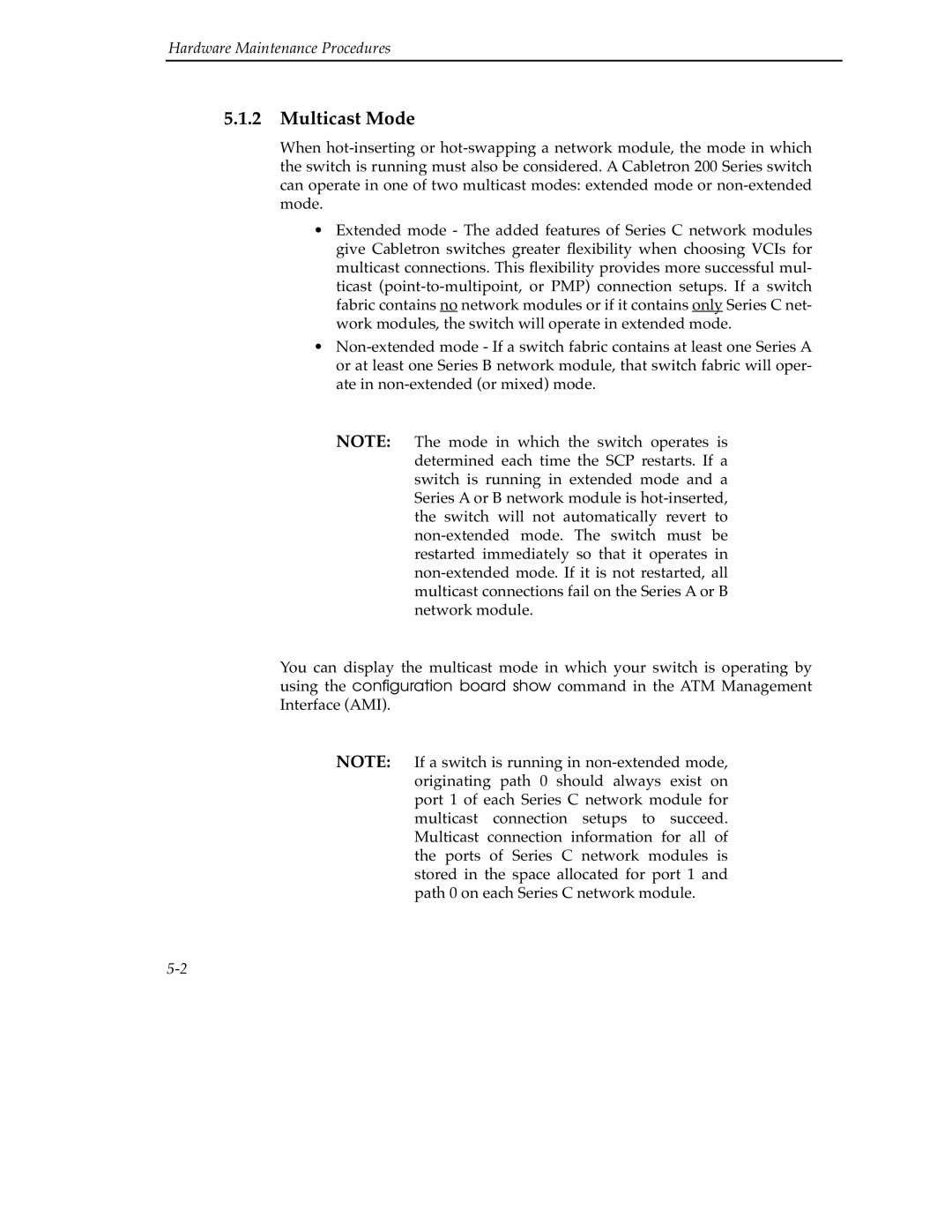Hardware Maintenance Procedures
5.1.2Multicast Mode
When hot-inserting or hot-swapping a network module, the mode in which the switch is running must also be considered. A Cabletron 200 Series switch can operate in one of two multicast modes: extended mode or non-extended mode.
•Extended mode - The added features of Series C network modules give Cabletron switches greater flexibility when choosing VCIs for multicast connections. This flexibility provides more successful mul- ticast (point-to-multipoint, or PMP) connection setups. If a switch fabric contains no network modules or if it contains only Series C net- work modules, the switch will operate in extended mode.
•Non-extended mode - If a switch fabric contains at least one Series A or at least one Series B network module, that switch fabric will oper- ate in non-extended (or mixed) mode.
NOTE: The mode in which the switch operates is determined each time the SCP restarts. If a switch is running in extended mode and a Series A or B network module is hot-inserted, the switch will not automatically revert to non-extended mode. The switch must be restarted immediately so that it operates in non-extended mode. If it is not restarted, all multicast connections fail on the Series A or B network module.
You can display the multicast mode in which your switch is operating by using the configuration board show command in the ATM Management Interface (AMI).
NOTE: If a switch is running in non-extended mode, originating path 0 should always exist on port 1 of each Series C network module for multicast connection setups to succeed. Multicast connection information for all of the ports of Series C network modules is stored in the space allocated for port 1 and path 0 on each Series C network module.
5-2
